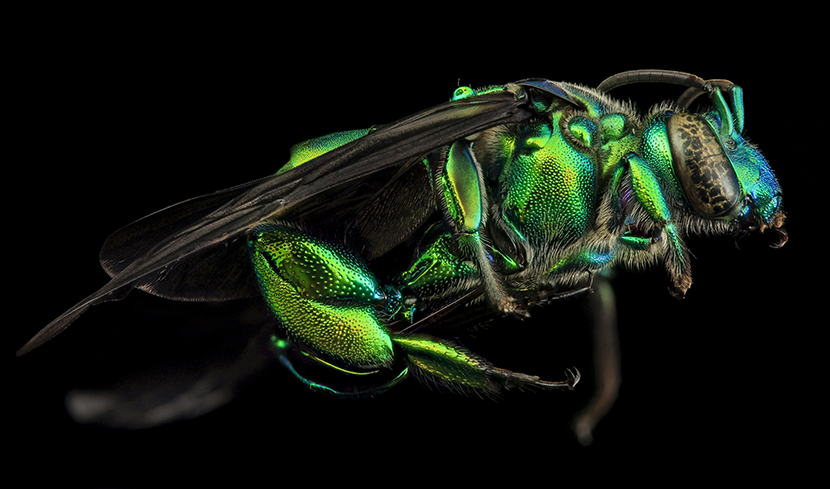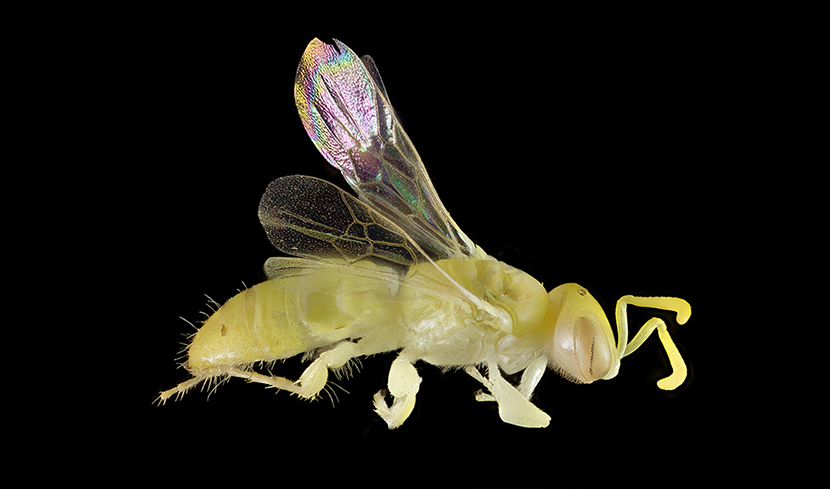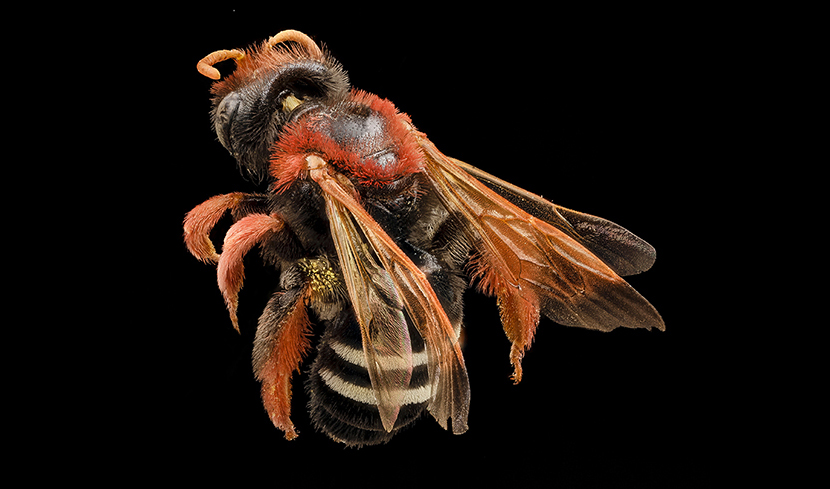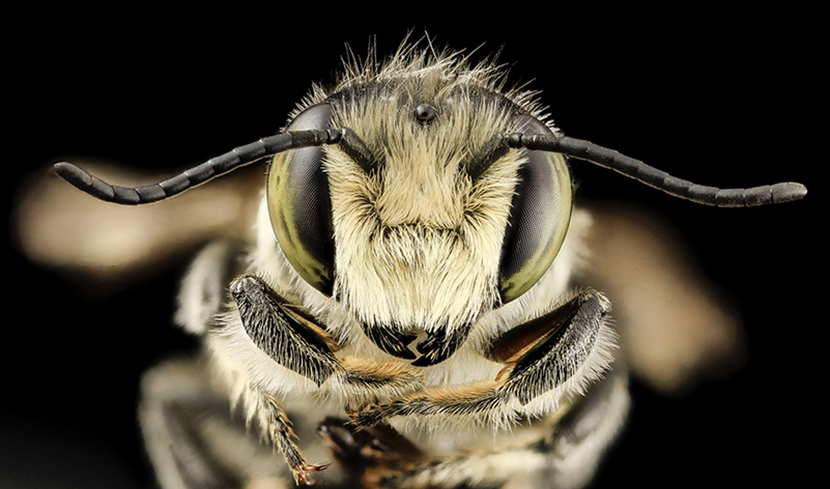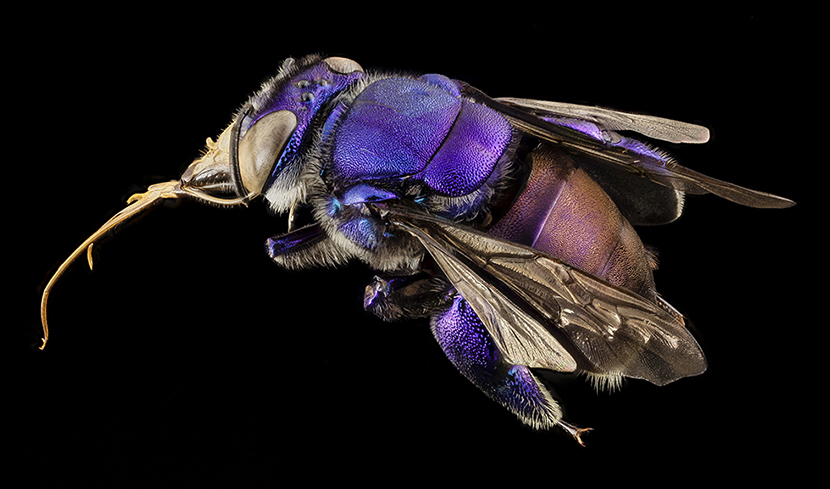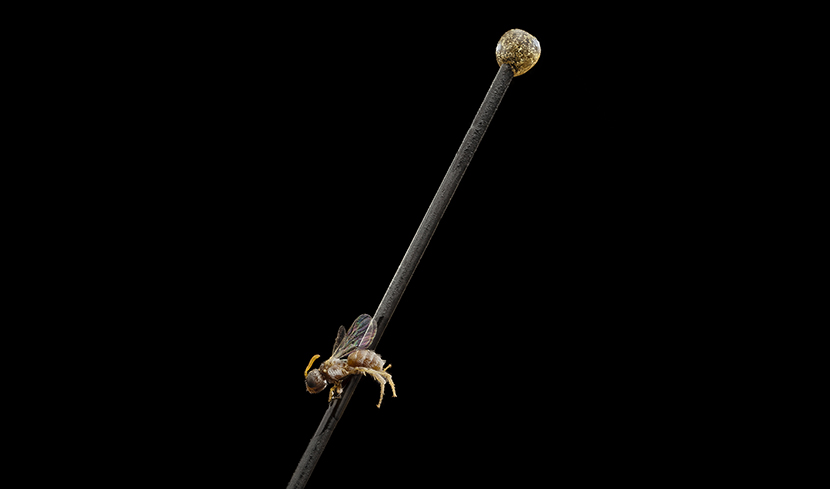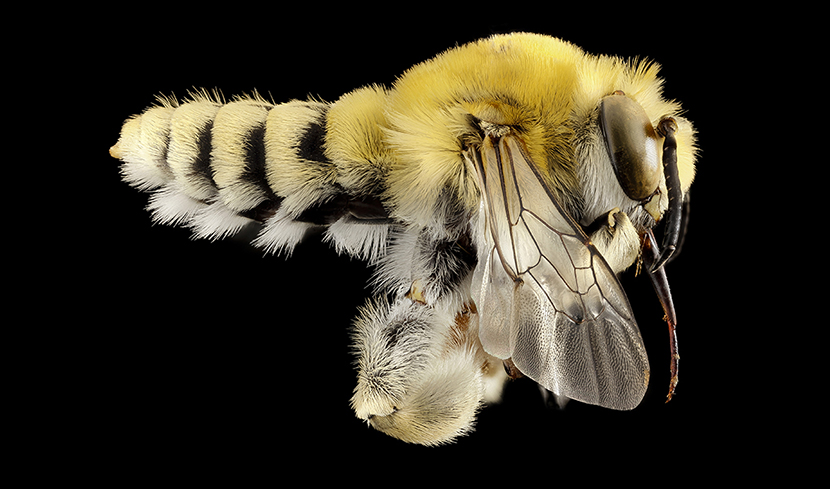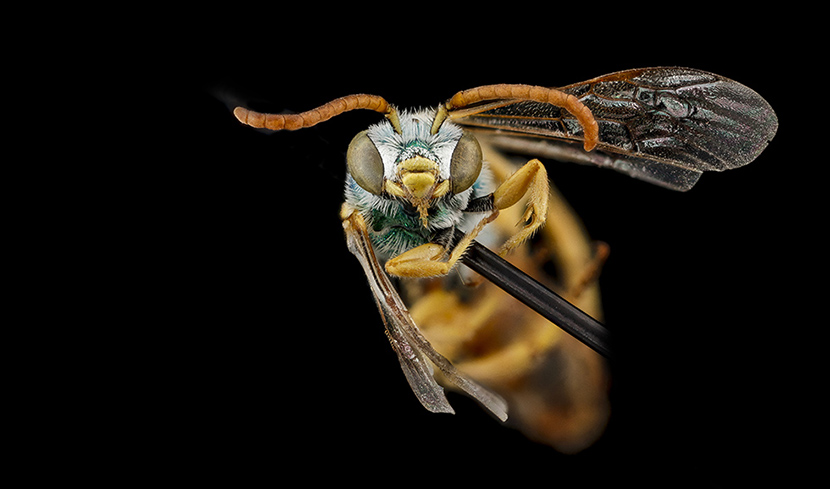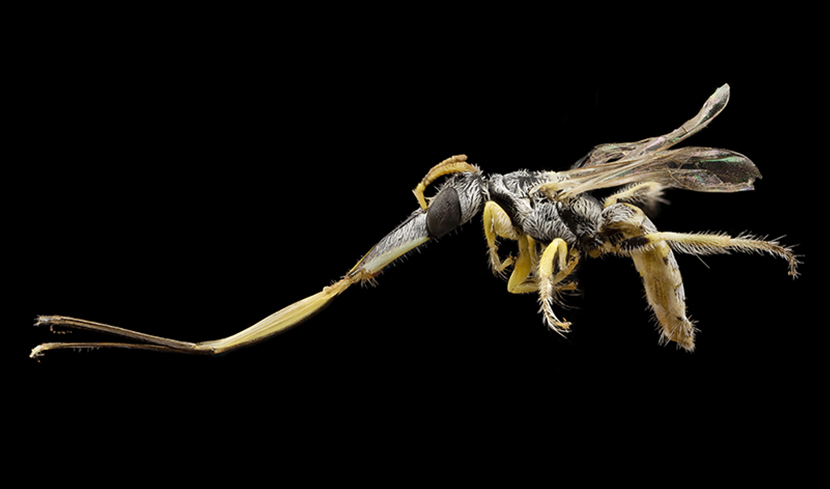Slideshow: The Dazzling Diversity of Bees
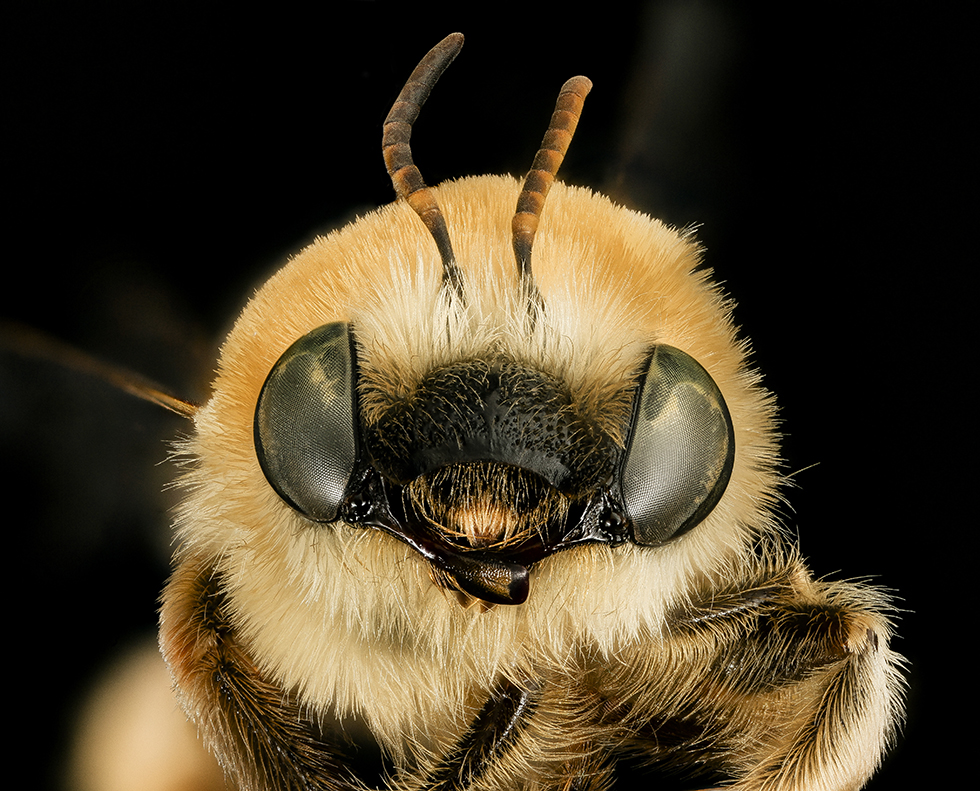
A female Martinapis luteicornis from Arizona.
(Inside Science) -- Think of a bee. Chances are you are picturing a western honey bee, an Afro-Eurasian species commonly raised by beekeepers. But western honey bees are just one of more than 20,000 bee species in the world. Unlike honey bees, most wild bee species are solitary, and many specialize on one or a few types of flowers. They come in a dazzling variety of colors, shapes and textures, and they range in size from smaller than a sesame seed to larger than a walnut.
Here, we present a small sampling of bees photographed by the U.S. Geological Survey's Bee Inventory and Monitoring Lab in Beltsville, Maryland. All the images are in the public domain. You can learn about wild bees and the threats they face from managed bees in this Inside Science feature, or in this video. To see more bees, visit the lab's Flickr page, or take a closer look at what's buzzing in your garden.

